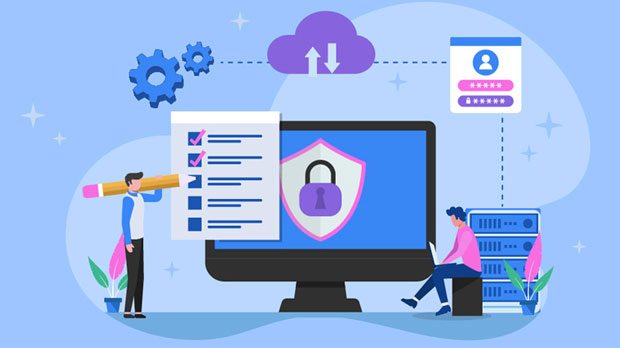When using a mobile proxy server such as PYPROXY, it’s essential to distinguish between the different types of network connections it supports: wireless and wired proxies. Each of these connections brings unique advantages and challenges to the table, and understanding how they function within the context of mobile proxy servers is crucial for optimizing performance, privacy, and security. In this article, we will delve into the key differences between wireless and wired proxies in PyProxy, outlining their respective benefits and drawbacks, and exploring how they impact mobile proxy use cases. 1. Introduction to PyProxy Mobile Proxy ServerA mobile proxy server like PyProxy allows users to route their internet traffic through mobile networks instead of standard ISPs. This method is used widely for tasks that require anonymity, geolocation masking, and bypassing network restrictions. The type of connection used, whether wireless (Wi-Fi) or wired (Ethernet), directly impacts the speed, reliability, and security of the proxy service. Understanding how each type of proxy connection influences performance is vital for selecting the best configuration based on the user’s needs.2. What is Wireless Proxy (Wi-Fi) in PyProxy?Wireless proxies, often connected via Wi-Fi networks, enable mobile devices to access the internet without the need for physical cables. This type of proxy connection is more flexible, as it allows users to access the internet on the go, making it a popular choice for mobile users and those looking for portability.2.1. Key Features of Wireless Proxy- Flexibility and Mobility: Wireless proxies are inherently mobile, allowing users to connect from virtually anywhere within the coverage of a wireless network. This is ideal for people who require proxy services while on the move or in areas where wired connections are unavailable.- Ease of Setup: Setting up a wireless proxy is often simpler than configuring a wired connection, as it doesn't require physical cables and can be configured through mobile devices or wireless routers.- Signal Interference and Speed Fluctuations: One major drawback of wireless proxies is that the speed and stability of the connection are influenced by factors like signal strength, network congestion, and interference from other devices. This can lead to inconsistent speeds or interruptions in service, particularly in areas with heavy traffic or poor coverage.2.2. Advantages of Wireless Proxy- Mobility and Convenience: Wireless proxies allow users to remain connected from virtually anywhere, which is ideal for activities like web scraping, anonymous browsing, or geolocation-based services.- Scalability: Wi-Fi networks can handle multiple devices at once, making it a scalable solution for proxy usage across many mobile devices.2.3. Disadvantages of Wireless Proxy- Unreliable Speed: The performance of wireless proxies can be compromised due to fluctuating signal strength and interference.- Security Risks: Wireless networks are often more vulnerable to unauthorized access and security breaches compared to wired connections. Users need to ensure that proper encryption and VPN solutions are in place.3. What is Wired Proxy (Ethernet) in PyProxy?Wired proxies, on the other hand, rely on physical connections through Ethernet cables, offering a stable and reliable internet connection. This type of proxy is typically used in fixed locations where the user has direct access to the internet through a wired network.3.1. Key Features of Wired Proxy- Stable and Consistent Connection: Wired proxies offer more stable and consistent speeds compared to wireless ones, as they are not affected by factors like signal strength or interference.- Security and Reliability: Wired connections are more secure than wireless ones because they are less susceptible to external interference and hacking attempts. This makes wired proxies a preferred option for businesses and users requiring high levels of security.- Limited Mobility: Unlike wireless connections, wired proxies are not mobile. Users are tied to specific locations where Ethernet cables are available, limiting their flexibility.3.2. Advantages of Wired Proxy- Speed and Stability: Wired connections typically provide faster speeds and lower latency, making them ideal for data-intensive tasks such as video streaming, large file transfers, or gaming.- Enhanced Security: Since wired connections are harder to intercept, they offer enhanced security and are less prone to unauthorized access.3.3. Disadvantages of Wired Proxy- Limited Mobility: Users are confined to a specific location where the Ethernet connection is available, making wired proxies less convenient for mobile or on-the-go use.- Complex Setup: Wired proxies require physical connections and may need additional hardware like routers or modems, complicating the setup compared to wireless proxies.4. Performance Comparison: Wireless vs. Wired Proxy4.1. Speed and LatencyWired proxies typically outperform wireless proxies in terms of speed and latency. Ethernet connections are more stable and can deliver higher bandwidth without the interference associated with Wi-Fi networks. This makes wired proxies ideal for tasks that require consistent high-speed internet access.On the other hand, wireless proxies can experience latency and fluctuating speeds depending on the Wi-Fi signal strength, distance from the router, and network congestion. However, Wi-Fi networks have improved over the years, with modern standards like Wi-Fi 6 offering faster and more stable connections.4.2. Security ConsiderationsWhen it comes to security, wired proxies generally offer more protection than wireless proxies. Ethernet connections are harder to breach since they don’t rely on radio waves to transmit data, which are easier to intercept.Wireless proxies are more vulnerable to attacks like man-in-the-middle and eavesdropping unless strong encryption measures (such as WPA3 encryption) are implemented. While VPNs can provide an extra layer of security for wireless proxies, the inherent risks of wireless networks cannot be entirely eliminated.5. Cost and AccessibilityWireless proxies often come with fewer setup and maintenance costs, as they do not require additional infrastructure beyond the wireless router. This makes them a cost-effective solution for mobile users or small businesses.Wired proxies, however, may require investments in additional networking hardware, including Ethernet cables, routers, and switches, making them more expensive to set up initially. However, the higher reliability and lower long-term maintenance costs may justify the investment for users with specific needs, such as businesses or data centers.6. Use Cases for Wireless and Wired Proxies6.1. Wireless Proxy Use Cases- Mobile Applications: Wireless proxies are ideal for use cases where mobility is a priority, such as location-based services, mobile web scraping, or browsing.- Remote Work: For users working remotely or frequently moving between locations, wireless proxies provide flexibility and convenience.6.2. Wired Proxy Use Cases- Business Networks: Wired proxies are commonly used in businesses that require high security, consistent speeds, and reliable connections for tasks like data processing, communications, and enterprise resource planning (ERP).- High-Performance Tasks: Users who need the highest levels of speed and reliability, such as video streaming, gaming, or large file uploads, can benefit from the stability of wired proxies.In conclusion, the choice between wireless and wired proxies in PyProxy depends on the user's specific needs. Wireless proxies provide flexibility and mobility, making them perfect for on-the-go use, but may suffer from performance inconsistencies and security concerns. On the other hand, wired proxies offer better speed, stability, and security, but come with limitations in mobility and setup complexity. By understanding these differences, users can make an informed decision on which proxy connection best suits their use case, whether for personal, professional, or business purposes.
Oct 24, 2025



































































